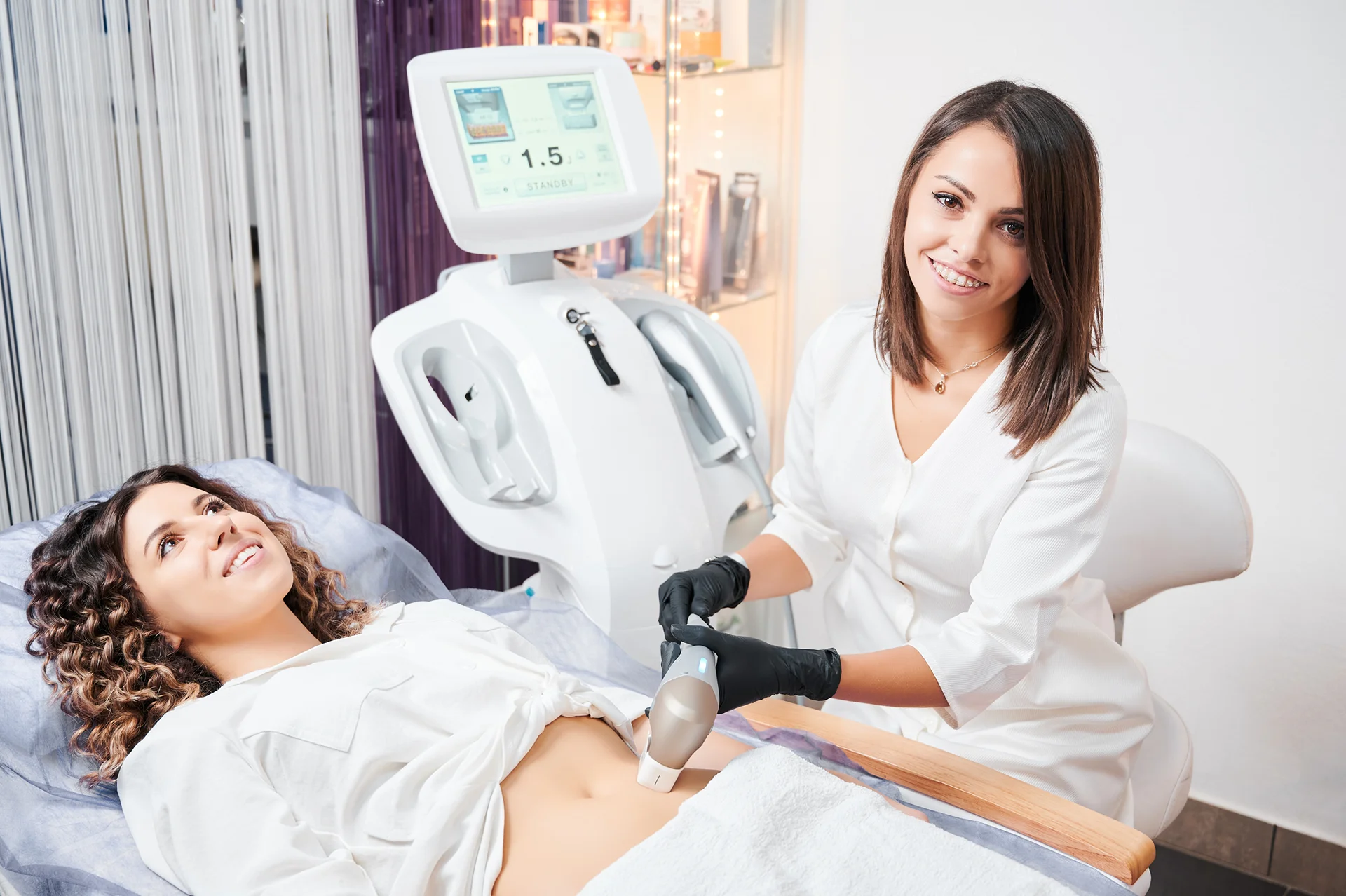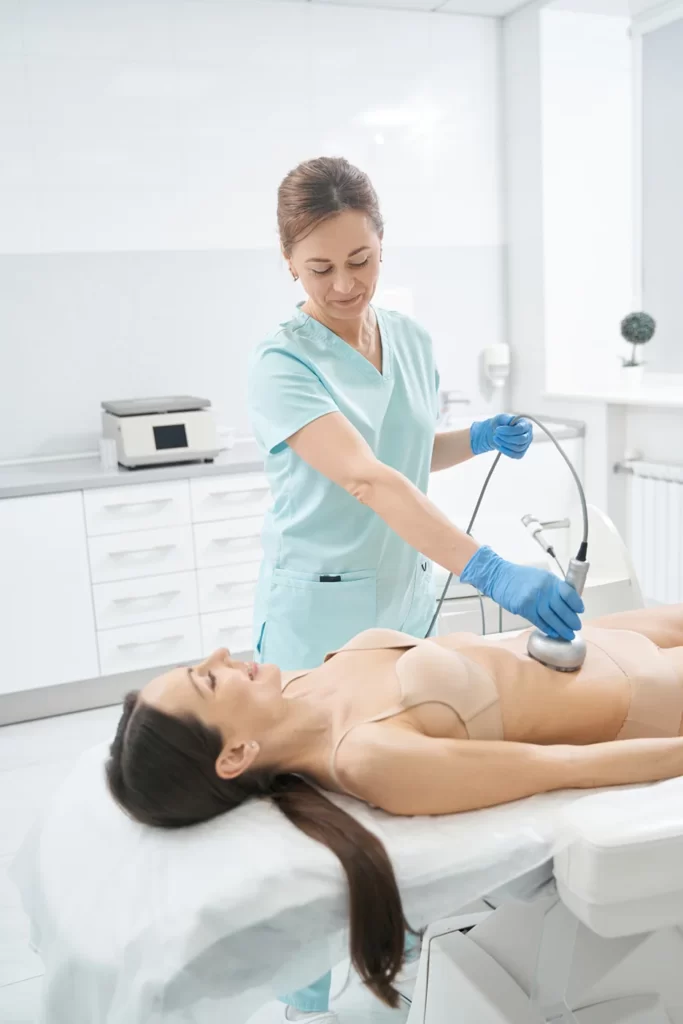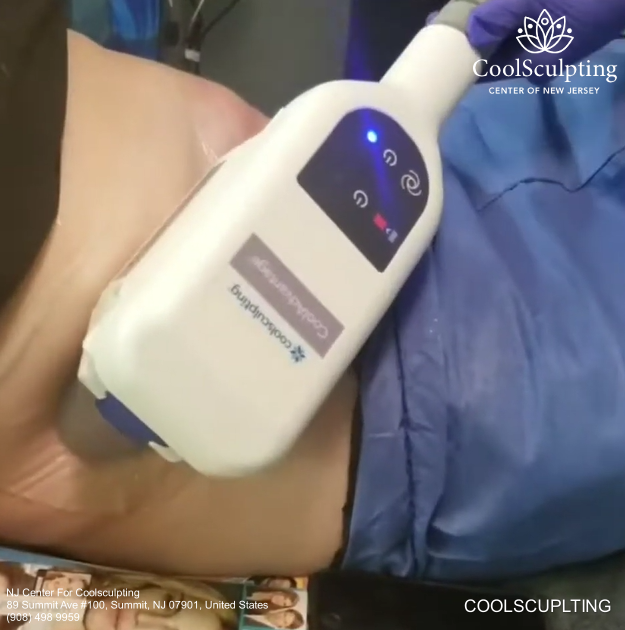Menu
(908) 628-1070

If you're considering CoolSculpting, a popular non-invasive fat reduction treatment, you might be curious about more than just its slimming effects.
One question that often pops up is: Could CoolSculpting affect my bathroom habits? It's a practical concern, so let's dive into whether this fat-freezing procedure might have any unexpected side effects on your bowel movements.
We'll explore how the body processes the treated fat cells, compare CoolSculpting to other fat-reduction methods, and discuss any potential digestive changes to help you understand what to expect after your session.
Achieve Lasting Results with NJ Center for CoolSculpting: Contact us to learn how CoolSculpting can offer you sustainable body contouring solutions.
Up to 25% Fat Reduction With CoolSculpting: Treat Yourself Today!
CoolSculpting is a non-invasive fat reduction procedure that uses controlled cooling to target and eliminate stubborn fat cells in specific areas of the body.
CoolSculpting only affects the targeted fat cells in the treated area. It does not impact or remove any surrounding tissues, skin, muscles, or nerves.
This makes it an appealing option for reducing small, localized fat bulges that are resistant to diet and exercise. Some common treatment areas include the abdomen, thighs, flanks, back, arms, and chin.
CoolSculpting works by applying a specialized applicator to the target area, cooling the underlying fat tissues to a level that induces apoptosis, or programmed cell death. This process leads to the gradual breakdown and death of the treated fat cells.
As these cells die, macrophages – a type of white blood cell – consume them as part of the body’s natural inflammatory response. The remnants of these cells are then processed by the lymphatic system and liver. Eventually, they are eliminated from the body, primarily through the gastrointestinal system.
This peak elimination process typically occurs around 4-6 weeks after the treatment. During this time, some individuals may temporarily notice minor changes in their bowel movements as the body expels the broken-down fat cell waste.

Some CoolSculpting patients do anecdotally report experiencing slightly more frequent bowel movements and looser stool consistency in the first few weeks after their procedures.
However, there is limited clinical data directly linking CoolSculpting to increased bowel movements. These effects typically resolved quickly and were attributed to the body's inflammatory response to the apoptotic fat cells.
But overall, increased bowel movements do not appear to be a consistent or lasting side effect of CoolSculpting for most patients.
CoolSculpting is a procedure that specifically targets subcutaneous fat, which is situated just beneath the skin's surface.
It does not impact other tissues or organs. If you're experiencing gastrointestinal symptoms, it's important to understand that these are not typically associated with CoolSculpting.
For such symptoms, it would be advisable to consult with your primary care physician or a gastroenterologist. They can assist in determining the root cause of your digestive issues.
Remember, effective diagnosis and treatment require a professional evaluation of your specific condition.
Many patients adopt healthier eating habits and increase their water intake to maximize and maintain their CoolSculpting results over time.
Consuming more fiber, fruits, vegetables, and water while avoiding processed foods may help promote regular bowel movements regardless of whether a patient has CoolSculpting.
If looser stools occur after increasing fiber and water intake post-treatment, this may be a temporary adjustment response as the body regulates.
Mild constipation can also sometimes occur if a patient restricts calories too severely in hopes of enhancing fat reduction outcomes. Finding the right nutrition balance tailored to your body’s needs is important.
For most patients, any minor gastrointestinal side effects in the first few weeks after CoolSculpting quickly resolve on their own without medical intervention. However, excessive diarrhea, vomiting, abdominal pain, or other severe symptoms should prompt a medical evaluation.
Dehydration is also a potential risk if increased bowel movements persist. Be sure to drink plenty of fluids and electrolyte-rich beverages like coconut water. Avoid overly restrictive diets. Introducing more soluble fiber like oatmeal, beans, lentils, and psyllium husk can also help regulate stools.
If unusual changes in bowel habits remain bothersome for more than 2-3 weeks post-treatment, consult your healthcare provider to rule out potential underlying causes unrelated to CoolSculpting. But in most cases, the body naturally adapts and returns to normal bowel function within a few weeks.
Compared to more invasive fat removal procedures like liposuction, CoolSculpting appears to cause fewer and milder gastrointestinal side effects.
With liposuction, a much greater volume of fat is physically suctioned out, which can more dramatically impact the digestive process as the body works to eliminate the waste.
Liposuction also involves anesthesia and surgical risks not present with non-invasive CoolSculpting. However, liposuction does offer a more significant fat reduction in a single session versus the more gradual, moderate improvements from serial CoolSculpting treatments.
Non-surgically dissolving fat with injections like Kybella may produce digestive impacts similar to CoolSculpting, but this method cannot treat as many body areas.
Ultimately, CoolSculpting provides localized fat reduction with minimal related bowel movement changes reported in most cases.

Although some patients may experience temporary bowel changes, such as an increased frequency of stools, after undergoing CoolSculpting, current research indicates that significantly heightened bowel movements are not a prominent side effect.
Mild gastrointestinal effects normally resolve within a few weeks as the body eliminates dead fat cells. Diet adjustments adopted to maximize results can also impact bowel habits.
Discuss any lingering, unusual bowel activity with your provider. But for most, CoolSculpting should not cause lasting negative impacts on digestion and elimination processes.
Experience Advanced Fat Reduction at NJ Center for CoolSculpting: Join us to achieve your body goals with the latest in CoolSculpting technology.
Up to 25% Fat Reduction With CoolSculpting: Treat Yourself Today!